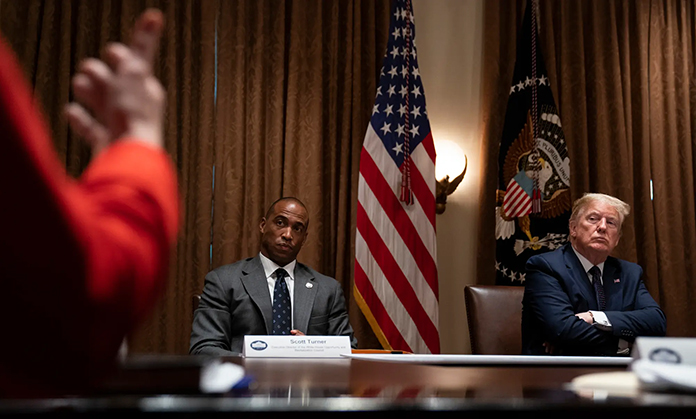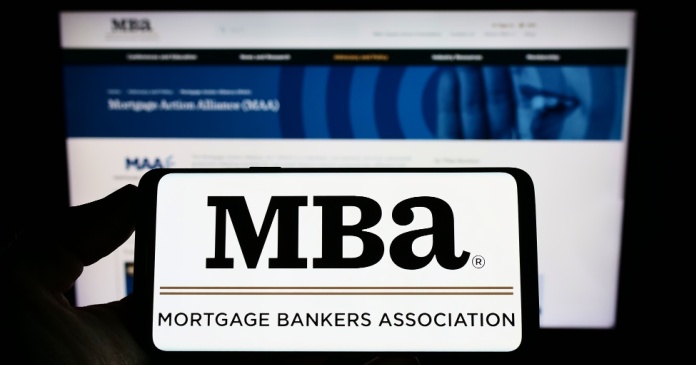“The Congress really took a hard look at our industry’s lobbying efforts to create a more balanced housing policy,” Camden Property Trust CEO Ric Campo told analysts during the apartment REIT’s Q2 earnings call, held a day after the bill was approved. Tacked on in the final hour was a rescue measure designed to shore-up beleaguered government-sponsored enterprises (GSEs) Fannie Mae and Freddie Mac, after investors began to doubt the mortgage giants’ ability to absorb future losses from the avalanche of new foreclosures expected to hit single-family homeowners over the next two years.
Together, the two publically-traded, shareholder-owned but government- backed GSEs own or guarantee nearly half of the nation’s 12 million home mortgages valued at $5.3 trillion — $1.5 trillion held as mortgage securities and the others in the form of bonds, or mortgage- backed securities (MBS), that are sold to investors. Because of the opacity of the GSEs’ portfolios, just who owns their stocks, bonds and MBS is somewhat obscure. According to the Council on Foreign Relations, the biggest buyers are foreign central banks, with China’s topping the list.
The GSEs implicitly guarantee the buyers of their securities against default. In turn, the secondary mortgage market increases the supply of money available for mortgage lending and home purchases. Inability to sell bonds because of a crisis of investor confidence would paralyze the GSEs’ ability to finance new mortgages. Interest rates would increase sharply and it would be even harder to buy or sell a home than it is today. Repercussions would be felt throughout the international financial system.
The GSEs’ relationship with the federal government affords Fannie and Freddie privileges other lending institutions don’t have — tax benefits, looser restrictions, a line of credit from the Department of the Treasury and the ability to borrow cheaply and operate on much less capital. The documents of all GSE securities explicitly deny U.S. government backing, but Standard & Poor’s granted “AAA” status to the GSEs’ senior unsecured debt because of the inferred guarantee.
Wayne Passmore, a member of the board of governors of the federal reserve, estimated in 2005 that the annual gross value of the implicit government subsidy was somewhere between $122 billion and $182 billion, of which 53 percent was retained by shareholders, all of whom, until recently, have done quite well.
The GSEs don’t directly buy subprime mortgages. They do buy other lenders’ securities that are backed by subprime loans. Around mid-2007, as housing prices weakened, Fannie and Freddie increased their commitment to buy subprime and Alt-A MBS. At the end of 2007, when the pair reported their first combined loss since 1982, subprime and Alt-A MBS represented 13.5 percent of their total assets, according to the Congressional Research Service (CRS).
Regulators agreed to let the GSEs take on another $200 billion in subprime and Alt-A MBS this March and, as a result of the $300 billion Economic Stimulus Act of 2008, raise their conforming loan limits in certain high-cost areas.
Trouble began in July, when a Lehman Bros. analyst speculated to his firm’s clients that Fannie and Freddie would need to raise a combined $75 billion, if a proposed change to accounting rules that requires financial services firms to move off-balance-sheet securitizations to their balance sheets, was applied to the GSEs. But, he said, Fannie and Freddie probably would be exempt.
A story soon surfaced in the New York Times that said, “Under fair- value accounting rules, in which the company puts a market value on assets as if it had to sell them now, Freddie Mac is technically insolvent.” It wasn’t the first time the GSEs’ accounting methods, or the “implicit guarantee,” was called into question. But it was the first time since Fannie Mae was created as a government corporation in 1938 that home prices had fallen nationally. Shareholders panicked and a sell-off ensued, with short sellers leading the way.
Next, rumors flew that the Fed was considering taking Freddie and Fannie into receivership. Although the companies, their regulator and Treasury Secretary Henry Paulson all rushed to reassure investors that the GSE’s were sufficiently funded to meet their debt obligations without having to recapitalize, Wall Street wasn’t convinced. Share prices continued to fall.
The U.S. Treasury unveiled its rescue plan on July 13. The Federal Reserve gave the GSEs’ access to the Fed special discount window, historically a lender of last resort previously reserved for commercial banks to borrow from the Fed at 2.25 percent, but opened to investment bank J.P. Morgan for the March bail-out of Bear Stearns.
The mark-to-market valuation of Freddie and Fannie’s assets would play a role in the Bush administration’s decision to pledge financial aid to the GSEs and restore investor confidence. The Congressional Budget Office’s cost estimate of the proposed GSE bail-out, released on July 22, stated that, for regulatory purposes, Fannie and Freddie held more than $80 billion of capital and were classified as “adequately capitalized” at the end of March but, by July 11, the market value of the firms’ outstanding equity shares, which is based on a continuous measure of investors’ view of the GSEs and their future performance, had fallen to a low of $11 billion.
In 2000, Peter J. Wallison, former White House counsel to President Ronald Reagan, said that, if the federal government’s implied guarantee of the GSEs’ debt was ever made explicit, “It would make them immortal.”
Today, Freddie and Fannie are under the watch of a new safety and soundness regulator, the Federal Housing Finance Agency (FHFA), but burdened by few new restrictions.
The pair has an unlimited line of credit to the U.S Treasury, which also will buy equity shares in the firms, if no one else will. The CBO estimated in July that taxpayers are on the hook for less than $25 billion or, if there is further erosion in the single-family housing market, as much as $100 billion, but said the odds of the latter happening are less than 50 percent. CBO Director Peter R. Orszag also told lawmakers there was a more than a 50 percent chance that neither the loans nor the stock buys would be necessary.
If Freddie and Fannie tap the till, the U.S. Treasury and the Federal Reserve would have a greater role in setting the pair’s capital standards. Those bail-out provisions expire in December 2009, but the GSEs’ new regulator is here to stay.
The FHFA is headed by Director James B. Lockhart III, former director of the old regulator, the Office of Federal Housing Enterprise Oversight (OHFEO), until a new regulator is appointed by the incoming U.S. president.
The Housing and Economic Recovery Act of 2008 was a top priority this year for the National Multi Housing Council (NMHC). The last-minute rescue plan is a critical piece of the package because Fannie and Freddie have played a major role in providing debt capital to the multifamily industry for decades. Although multifamily is a small component in the grand scheme of Fannie and Freddie’s overall mortgage funding, because the single-family component is so large, for the past five or six years, multifamily mortgages have averaged about $60 billion annually.
“That’s nothing to sneeze at and, right now, they are the only game in town,” said David Cardwell, VP of Capital Markets for the NMHC.
Not everyone is so happy. The plan drew criticism from conservative Republicans and others caught up in the controversy over what should be done about the GSEs. Many think the pair have grown too large with too little regulation and have strayed far from their original mission to bring the American Dream of affordable housing to low- and middle-income families and ventured into risky territory where they don’t belong.
U.S. Sen. Christopher Dodd, (D-Conn), chairman of the U.S. Senate Banking Committee and author of the Housing and Economic Recovery Act of 2008, said, “It is a step, and I hope and expect an important step, towards putting our nation on the road to economic recovery,” but added that he is uncomfortable handing the U.S. Treasury a “blank check” for a GSE bailout.
Former Treasury Secretary John Snow told Bloomberg.com that Fannie and Freddie have relied on leverage to fund their business, much like a hedge fund, and that the government should avoid taking them over.
Others, like economist, Nobel Laureate and former Senior VP and Chief Economist of the World Bank Joseph E. Stiglitz, called the bill an example of a public/private partnership in which the private sector takes the profits and the public sector takes the risk, coming from an administration supposedly committed to free-market principles.
Nationalize, restructure, split them up into five to 10 separate entities and sell them back to the market, suggested both Lawrence Summers, secretary of the U.S. Treasury for 18 months during the Clinton administration, and former Federal Reserve Chairman Alan Greenspan, who has been accused of helping to create the easy credit climate that led to the subprime debacle.
Nationalizing the companies would mean operating them in conservator-ship, which, although legal under a 1992 law if the companies’ chief regulator concluded they are both critically under-capitalized, would mean wiping out shareholder equity.
Even the apartment sector was concerned a few weeks earlier that a government bail-out, depending on its form, could cause the GSEs to cut back or shut down their multifamily lending programs, if they were required to preserve capital to stem losses on the single-family side — a bad scenario for the rental housing business, since Fannie and Freddie hold more than 35 percent of the national multifamily mortgage debt and nine percent of the outstanding total commercial and multifamily debt.
Now Campo and others believe that, with the explicit guarantee of the government, Fannie and Freddie are in a better liquidity position than ever and will grow larger than ever before.
“The government has basically thrown in the towel and said, ‘All right, we can’t constrain their growth, we’ll put in a stronger regulator and, over time, will make sure they don’t do speculative investments.’ I don’t see that as a threat to the multifamily business because they have to make money somewhere and multifamily loans are their most profitable and least risky,” said Campo.
He said the biggest risk to Freddie and Fannie will be when the new regulator takes over in the first or second quarter of 2009. “There’s a new sheriff in town. The ultimate risk is if the regulator comes in and says, ‘We want you to have more capital,’ then they either have to raise capital or lower their ability to make loans,” he said.
Cardwell agrees that the only concern anyone in the apartment industry has with regard to the GSEs has to do with the residual impact of what they will be required to do to raise capital necessary to bolster their loan loss reserves to support the single-family side of their business.
“Part of every multifamily mortgage purchased by Fannie Mae and Freddie Mac includes, as part of the premium, a risk-based capital fee, based on the risk factors of that loan. With the two companies’ heightened requirements to manage their total (single family and multifamily) mortgage risk capital more prudently as a direct result of their single-family portfolio problems, it is uncertain what this fully means to their multifamily requirements. Even with extremely low default rates–less that 0.50 percent–in their multifamily portfolios, they may be required to increase their capital set-aside from both a multifamily and combined portfolio perspective,” he said.
Multifamily has been the one bright spot in the GSEs’ portfolios since the conduit lenders effectively shut down. During Fannie Mae’s Q1 investor/analyst conference call, Chief Business Officer Rob Levin called the company’s multifamily business “a jewel” that stands out from all other businesses in terms of credit quality.
The NMHC doesn’t expect the GSEs to change their multifamily activity levels any time soon. “If there are modifications to their multifamily business, it is likely to be in the form of a higher rate to their customers that would be as a result of increased capital costs due to the companies’ current financial conditions. Their ability to serve the market is not likely to change, and even their pricing should continue to reflect market competition from credit companies, banks and insurance companies. But, in the short term, with the CMBS effectively shut down, they have done what everyone expected them to do, and that is to be in the market and provide competitive products,” said Cardwell.
Mortgage Bankers Association Senior Vice President Cheryl Malloy said representatives from both GSEs have assured lenders they are increasing their investment in multifamily this year, adding that, if the two companies face capital constraints, they could securitize their multifamily mortgages and sell them into the secondary market, which they have yet to do.
Fannie Mae invested $20 billion in the multifamily sector in the first half of 2008, making it the strongest first half ever for the company’s 20-year-old DUS lending program. The company is increasing its commitment to buy small multifamily loans of up to $3 million, or $5 million in certain markets, and expects to buy up to $1 billion in military housing bonds.
The GSE is offering two new products this year. Refi Plus offers the company’s DUS lenders a way to retain high-quality loans in their portfolios and provides borrowers with a streamlined process for refinancing their existing DUS loans. The product includes a rate- lock option of up to 24 months in advance of the expiration date of the prepayment period for the existing loan, and allows the use of a supplemental loan to fund additional proceeds without having to wait for the existing DUS loan to mature.
Another new Fannie Mae offering that hasn’t yet been named is intended to provide liquidity and stability across the life cycle of the multifamily property from construction to refinance. “We are working with several of our DUS lenders, who have construction lending expertise, to combine construction financing with permanent debt. Because we have a business here at Fannie Mae that purchases construction loan participations and we also provide forward commitments to purchase permanent loans, we are developing a loan structure that funds construction and converts to a take-out at the end, offering a seamless, lower cost execution,” said Fannie Mae spokesman Jon Searles.
Freddie Mac also introduced supplemental financing in its Capital Markets Execution pilot program that provides five-, seven- and ten- year terms for loans of $5 million to $100 million, rates of six percent and maximum LTVs of 80 percent, with a minimum 1.20x DSCR for refinances and 1.15x DSCR for acquisitions, as of the first week in August. The program broadens Freddie’s customer base and is expected to give it a hedge against competition from the CMBS sector, when the conduits return to the market.
“The CMBS markets will come back in the future, but Freddie and Fannie are positioning themselves to have a bigger share of the market when, in fact, it does come back,” said Campo.















